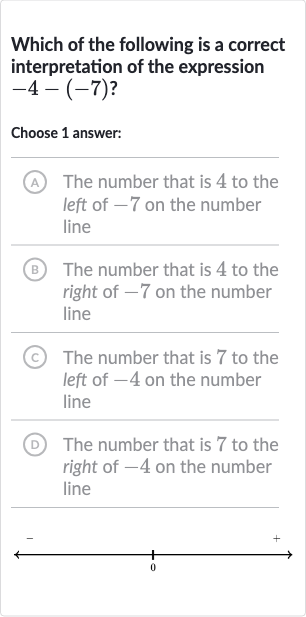AI tutor
Welcome to Bytelearn!
Let’s check out your problem:

Which of the following is a correct interpretation of the expression Choose answer:(A) The number that is to the left of on the number line(B) The number that is to the right of on the number line(C) The number that is to the left of on the number line(D) The number that is to the right of on the number line
Full solution
Q. Which of the following is a correct interpretation of the expression Choose answer:(A) The number that is to the left of on the number line(B) The number that is to the right of on the number line(C) The number that is to the left of on the number line(D) The number that is to the right of on the number line
- Understand the expression: Understand the expression.The expression involves subtracting a negative number from a negative number.Subtracting a negative number is the same as adding its positive counterpart.
- Perform the calculation: Perform the calculation.Now, we add the numbers.
- Interpret the result on the number line: Interpret the result on the number line.The result of the calculation is , which means that we have moved units to the right from on the number line to reach the number .
- Choose the correct answer: Choose the correct answer.The correct interpretation of the expression is that it represents the number that is units to the right of on the number line.Therefore, the correct answer is (B) The number that is to the right of on the number line.
